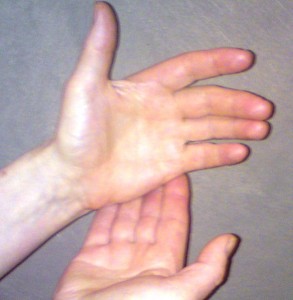Thoughts, images and feelings are all a normal part of our internal human world, and we wouldn’t want to be without them. They can fuel our creativity, they can drive and motivate us, they can keep us safe, and they can bring us passion, joy and contentment.
But sometimes they can be an absolute pain in the bum. They can haunt us, or annoy us, or demoralise us, or rile us into a frenzy of anger or guilt. They can scare us into a frozen state of avoidance, or bring us down into the depths of depression and apathy.
It’s Not That Easy to Switch Off Negative Thoughts
In the past we psychologists have told our clients that once they have identified the destructive thoughts and images in their heads, they can simply change them to positive ones. Although this idea has merit and works for some people, it is not as easy as it sounds for the majority of us. Failed attempts to block or throw away the negative thoughts and replace them with positive thoughts, have led to frustration and a heightened sense of failure and inadequacy in many of the people who have attempted this method. It is simply very hard to stop a thought, particularly one that you have been replaying for a long time, and if you do manage it, they can often sneak back with a vengeance.
Psychologists are now realising that, rather than trying to disperse unhelpful thoughts, it is fine to just allow them, as long as you don’t get caught up in them; as long as you don’t believe them to be the truth; and as long as you stay mindful of what they really are… just sounds, pictures and feelings.
‘But how do I do that?’ I hear you ask in an exasperated voice.
Eastern Wisdom
Western psychology has recently started to take notice of the ancient teachings of our eastern brothers who have long said that the best way to stop thoughts controlling us is to witness them as just thoughts, and one of the best ways to do that is to practice meditation.
Meditation is both simple and difficult, but you don’t have to be a master of it to begin to feel the benefits. Anyone can learn to meditate. You could learn by going to a meditation class, or by reading a book, or listening to an audio, or even by watching one of the many YouTube videos on the topic.
How to Meditate
All you do is sit in a comfortable position with your eyes closed and notice your breath and the sensation in your body as your breath enters and leaves your body. I personally like to focus more on the out-breath, as this is the side of the breath that is most linked with relaxation, but the traditional way is to just notice the breath going in and out without judging or controlling it.
Now, of course, many thoughts and images, memories and plans, and all the accompanying emotional paraphernalia, will invade your mind while you are trying to focus on the simplicity of your breath. But the trick is that you allow them all to come and go, without getting caught up in them. And if, as is inevitable, you do get carried away with a thought about the process, or your work, or relationship, or what to have for dinner, become aware of this little side-trip as soon as you can, and gently bring your attention back to your breath and your body.
Freedom to Choose
The process of witnessing thoughts images and emotions, and allowing them to come and go by bringing ourselves back to our body and breath, allows us to disentangle from them. We are then able to realise that the thoughts are not the essence of who we are: they are just static noise and don’t need to be given attention and power.
That awareness frees us up to be able to make decisions and take actions that our unhelpful thoughts and feelings have stopped us undertaking in the past. We don’t have to stop and block our unhelpful thoughts to reduce their power over us, just recognise them for what they are, and chose whether or not to buy into them.
Lorri Craig


 It is well known that
It is well known that 